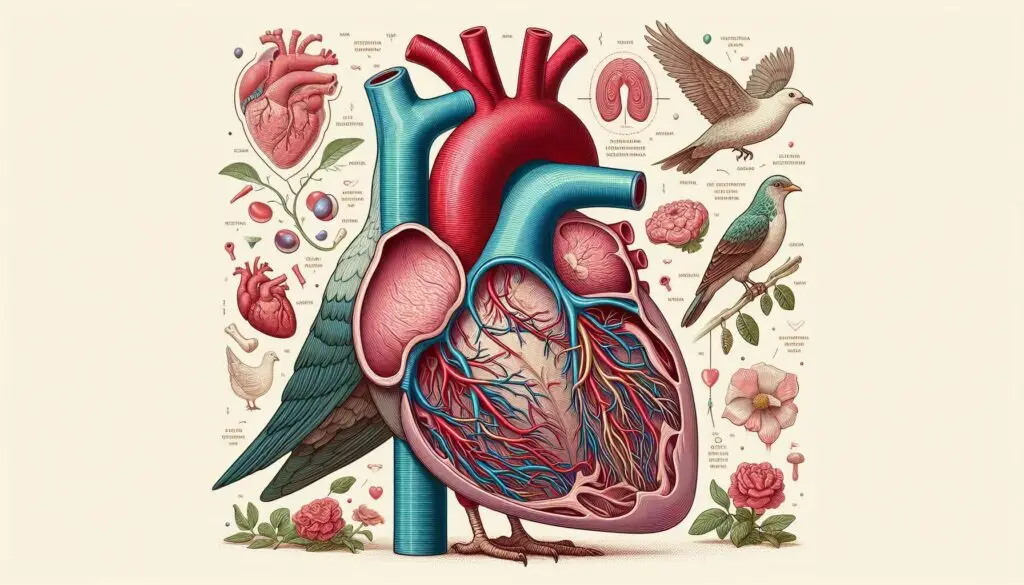Avian Musculoskeletal System

Introduction
Birds are fascinating creatures that have evolved unique adaptations to thrive in various environments. One of the most remarkable aspects of their biology is the avian musculoskeletal system. This system not only supports their lightweight bodies but also enables the incredible ability to fly. In this article, we will explore the anatomy of the avian musculoskeletal system, its functions, and its adaptations.
Overview of the Avian Skeleton
The avian skeleton is distinct from that of mammals. Birds have evolved several features that allow them to be lightweight while maintaining strength and functionality.
Key Features of Avian Bones
- Lightweight Structure: Birds possess a lightweight skeleton that is crucial for flight. The bones are often thin yet strong, providing the necessary support without adding excessive weight.
- Pneumatic Bones: Many avian bones are pneumatic, meaning they are hollow and filled with air. This adaptation reduces weight and helps in respiration. Common pneumatic bones include the skull, humerus, and clavicle.
- Medullary Bones: These bones serve as a calcium reservoir, especially important for egg-laying females. Medullary bones include the tibia, femur, and ribs, which release calcium to form eggshells.
- Fused Vertebrae: Certain vertebrae are fused to create a rigid structure that supports flight. This fusion enhances stability and strength during movement.
The Skeletal Framework
The avian skeleton can be divided into several key components:
- Axial Skeleton: This includes the skull, vertebral column, and rib cage. The skull is relatively small to reduce weight, while the vertebral column is adapted for flight.
- Appendicular Skeleton: This consists of the limbs and girdles. The pectoral girdle supports the wings, while the pelvic girdle supports the legs.
The Pectoral Girdle and Wings
The pectoral girdle is crucial for flight. It consists of three main bones: the coracoid, scapula, and furcula (wishbone).
Wing Structure
The wing is composed of several bones:
- Humerus: This bone connects the wing to the body and supports the primary flight muscles.
- Radius and Ulna: These bones allow for the flexing and extending of the wing.
- Carpals and Carpometacarpus: These bones contribute to the wing’s flexibility and movement.
- Digits: Birds have three or four digits that help in perching and landing.
The Pelvic Girdle and Legs
The pelvic girdle supports the legs and is adapted for walking and running.
Leg Structure
The leg consists of:
- Femur: This bone connects to the pelvis.
- Tibiotarsus: A fusion of the tibia and some tarsal bones, providing strength.
- Tarsometatarsus: A fusion of the remaining tarsal bones and metatarsals.
- Digits: Birds typically have three or four toes, which aid in balance and movement.
Muscular System
The muscular system in birds is highly specialized for flight.
Major Muscle Groups
- Pectoralis Major: This is the largest muscle, responsible for the downstroke of the wing during flight.
- Supracoracoideus: This muscle raises the wing and is crucial for the upstroke.
- Leg Muscles: These muscles support walking, running, and perching.
Muscle Adaptations
Birds have a high proportion of fast-twitch muscle fibers, allowing for quick bursts of energy needed for flight.
Functions of the Avian Musculoskeletal System
The musculoskeletal system in birds serves several critical functions:
- Support and Structure: The skeleton provides a framework that supports the body and protects internal organs.
- Movement: The joints and muscles work together to enable flight, walking, and other movements.
- Calcium Storage: Medullary bones play a vital role in calcium homeostasis, especially during egg production.
- Respiration: Pneumatic bones are part of the respiratory system, aiding in efficient breathing.
Conclusion
The avian musculoskeletal system is a remarkable example of evolution at work. Its unique adaptations allow birds to fly, reproduce, and thrive in diverse environments. Understanding this system not only enhances our knowledge of avian biology but also informs conservation efforts and poultry management practices.
For more pearls of Vets Wisdom:
https://wiseias.com/partitioning-of-food-energy-within-animals/






Responses